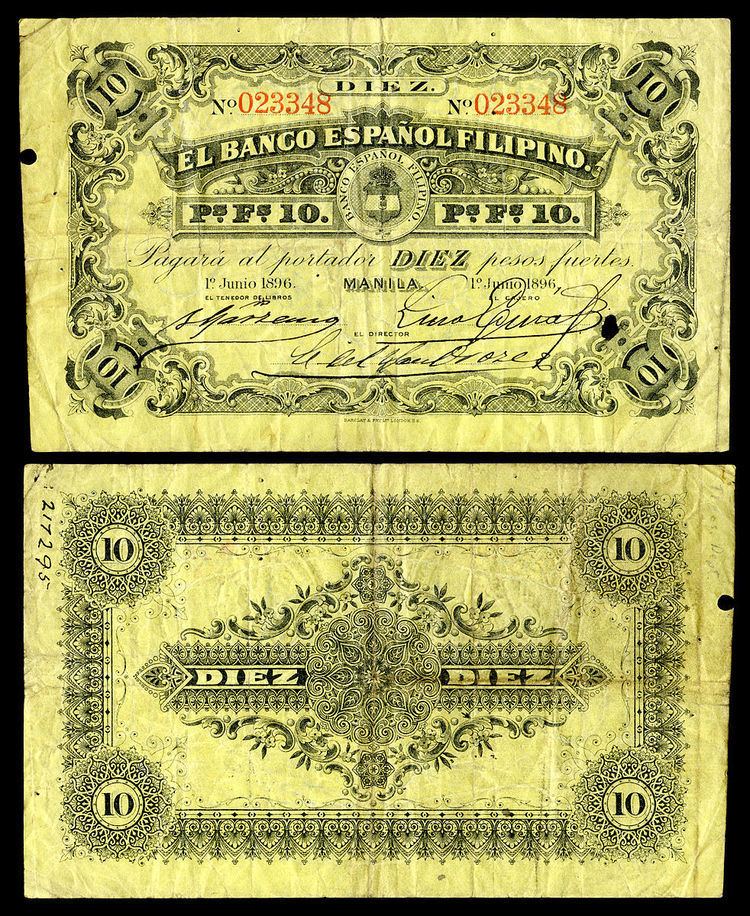 | ||
The peso fuerte (Spanish "Strong Peso" sign: PF) was the currency of the Philippines and the entire Spanish East Indies during the later Spanish colonial period, issued by El Banco Español Filipino de Isabel II (currently Bank of the Philippine Islands).
It replaced the real at the rate of eight reales to one peso fuerte. The colonial government at the time allowed El Banco Español-Filipino to issue pesos fuertes up to one-fourths of its subscribed capital, or a maximum of PF 100,000, which was subsequently raised to 300,000 in 1855.
El Banco Español-Filipino began issuing peso fuerte notes on May 1, 1852 and coins in 1861. The currency subsequently decimalized in 1864, being subdivided into 100 céntimos. The currency was replaced by the revolutionary peso in 1898 following the Philippine Revolution, and further by the modern peso in 1901.
Denominations
In 1868, the Spanish Revolution of 1868 overthrew Isabel II and forced her to exile in Paris. Upon hearing the news, the bank decided to rename itself as El Banco Español-Filipino, dropping the "Isabel II" from the name.
In 1877, the colonial government also began issuing peso fuerte-denominated treasury notes
